
This post includes affiliate links.
You did the Big Chop……So now what? Figuring out how to maintain your natural hair can be challenging, especially if you’ve just started your natural hair journey. I decided to big chop in 2015! And when I tell you I really didn’t know what to do with my “new” natural hair…. so I just put it in a protective style hoping my short tresses would miraculously grow out by the time I took out my protective style! Boyyyyy was I in for a rude awakening. My 4th year natural hair anniversary is coming up in May! (wow the time has flown by) While I am no expert, I have experimented and researched about natural hair for quite some time! There are some things I wish I knew more about before and after I did the big chop, as I feel my journey would have been a lot smoother!!!
Here are the 3 things you should definitely know after you do the big chop!
1. Hair Porosity Matters
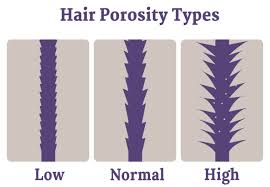
Hair Porosity Types: Low, Normal, High
What is hair porosity? Hair Porosity is your hair’s ability to absorb and retain moisture. Knowing your hair porosity can help you choose the right products to help style and maintain your natural hair. There are three categories of hair porosity: low, high, and normal.
Low Porosity
If you have low porosity it means that your hair cuticles are tight and relatively resistant to receiving water and moisture. Some characteristics of low porosity hair include:
-
- curls take a long time to dry
- excessive product build up
- water beads up on hair
- looks healthy but lacks elasticity and/ or volume
High Porosity
If you have high porosity it means that your hair cuticle is raised and can soak up water and moisture pretty quickly, but loses the moisture just as fast. Some characteristics of high porosity hair include:
-
- looks and feels dry and dull
- hair dries quickly
- tends to be frizzy and tangled
Normal Porosity
If you have normal hair porosity it means you’re in the clear!!! Your hair has the ability to hold in moisture for a period of time. It is important to also know that hair porosity can change when chemically processed or if you use excessive heat. Maintaining a healthy hair care regimen is the key to maintaining normal porosity. Some characteristics of normal porosity include:
-
- looks healthy
- has great elasticity
- voluminous
So now that you know what hair porosity is, let’s get into why it matters! Hair porosity is important to know because it guides you on how to create a hair regimen to maintain and get your hair healthy. Hair moisture can affect how your curls look! And I know we all want our curls to be poppin’! I know after I returned to natural, I was anxious to buy all these hair products and try them all, hoping my hair would turn out just like all the natural hair influencers! I was in for a huge disappointment! When my hair wasn’t coming out like theirs ( eye roll) I started to do my research and found out my hair was low-porosity. From there I was able to look up products and regimens that work well with my hair. Now my hair isn’t perfect, but it has come a long way, and I’m more happy than unhappy with it LOL! So now let’s get into how you can test for your hair’s porosity!
Hair Porosity Test
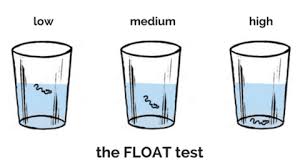
The easiest way I found on how to test my hair’s porosity was the float test. Your hair must be clean, so after “wash day” grab a cup and fill it with water. Take a strand of your hair and place it in the water.
Test Results:
Hair sinks to the bottom= You have HIGH porosity hair
Hair floats at the top= You have LOW porosity hair
Hair floats in the middle = You have NORMAL porosity hair
2. Hair Density Matters!
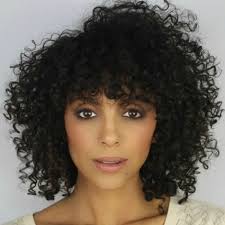
Low Density @discocurls
What is hair density? According to naturallycurly.com, hair density “refers to how closely [hair] strands are packed together on your head.” In laymen’s terms it is how thick or thin your hair is. As with porosity, there are 3 spectrums of hair density: low, normal, and high.
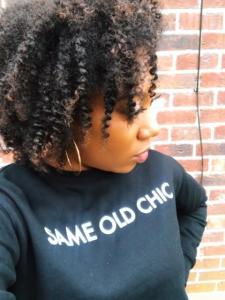
Normal density: @naturallyfabme
An easy way to determine hair density is you need to look at your hair while it is dry. Look at it from different angles and up close. If you can easily see your scalp then you have low density. If your scalp is somewhat visible then you have medium density. Lastly, if your scalp is barely visible then you have high density hair.
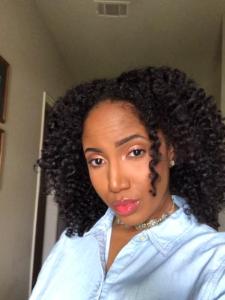
High density : @fab_pocahontas
It is important to know your hair’s density to determine which products will work for your hair. Your probably thinking.. Lawd… this a lot! But it is definitely helpful when customizing your hair care regimen! If you have low density hair you want to try to use lightweight products. You can have your curls popping without the heaviness. Medium density hair can usually work with a variety of products, but get the most definition with mousse. High density hair gets the most definition with butters, gels, and creams. Curls are able to be super defined and last longer.
3. Hair Type Matters… or does it?

Hair typing in general is a controversial topic. Some naturals prefer to hair type, while others don’t. I only use hair typing as a guide to figure out what works best for my hair and how certain styles may look in my hair. I enjoy watching other naturalistas with the same “hair type” as me so I can have a realistic picture of what my hair may look like if I tryout a particular hair style or product. Let’s be honest, we all scroll through the gram’ , or some social media outlet and see different pictures of natural hairstyles and most of the time we look for hair that mimics our own. Hair typing is system used to categorize different hair textures. I think it is beneficial for creating a haircare regimen along with styling.
You’ve Reached the Finish Line!
Once you are more knowledgeable about you hair’s porosity, density and type, you will be able to customize a hair care regimen that will lead you to a healthy head of hair. Research is key! Once you figure out these 3 things then your journey should go a lot smoother!!! Well until next time, Love and Light!


0 Comments
Trackbacks/Pingbacks